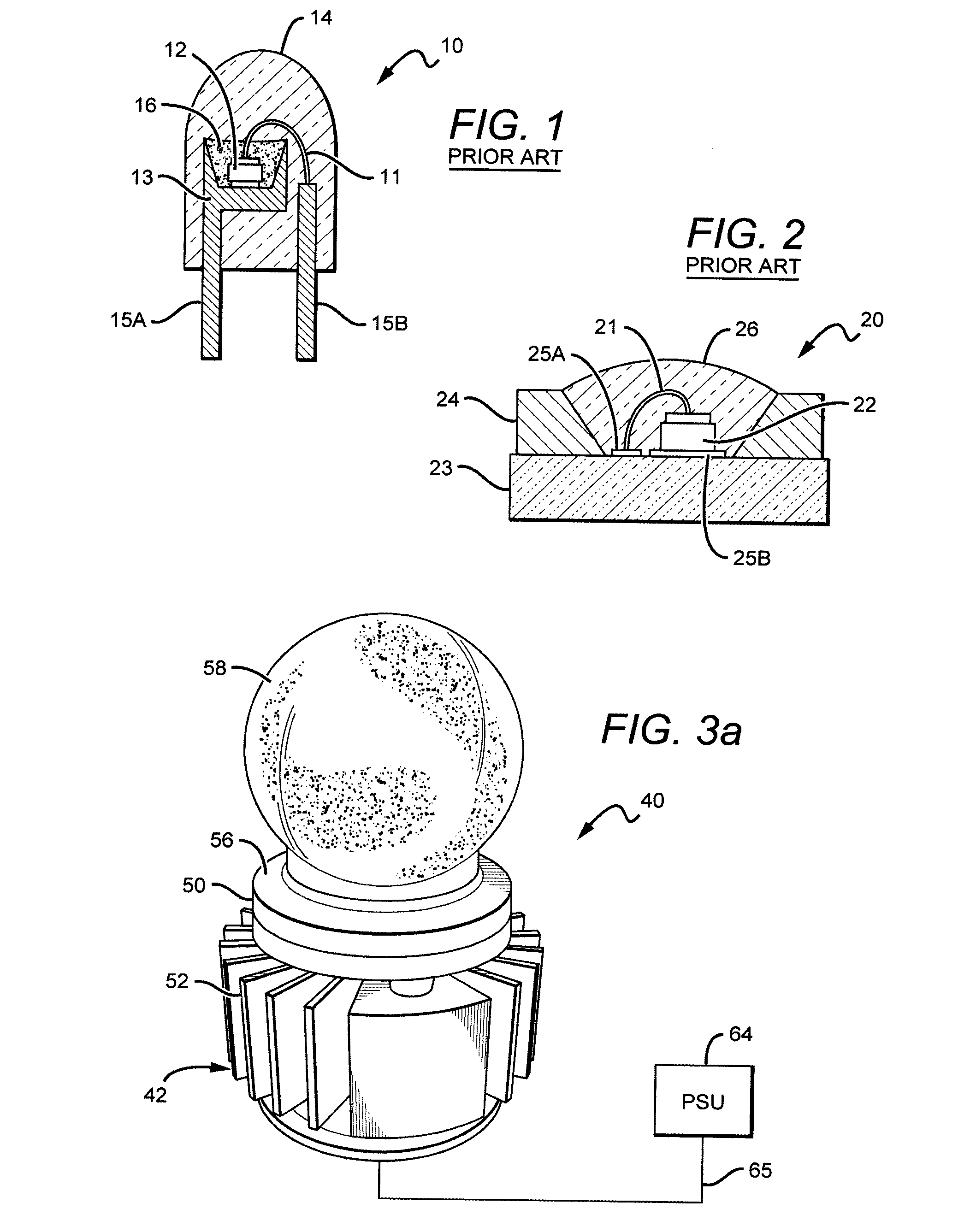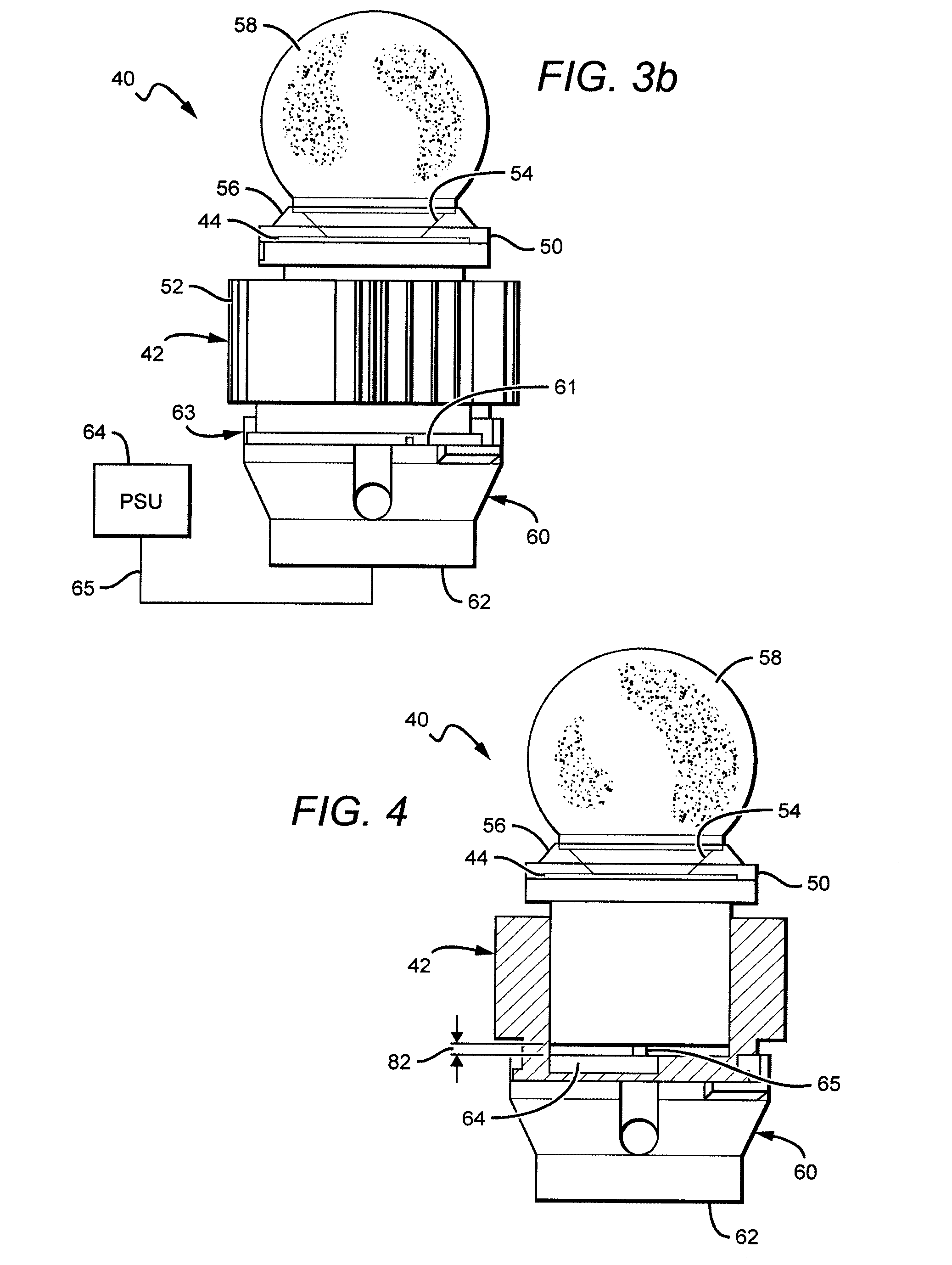Compact high efficiency remote LED module
a technology of led modules and led modules, applied in the field of solid-state lamps and modules, can solve the problems of high inefficiency of lamps, chronic and acute poisoning, and loss of as much as 95% of input energy, and achieve the effects of promoting heat conduction, improving thermal management features, and reducing heat sinks
- Summary
- Abstract
- Description
- Claims
- Application Information
AI Technical Summary
Benefits of technology
Problems solved by technology
Method used
Image
Examples
Embodiment Construction
[0045]The present invention is directed to different embodiments of LED module structures that are efficient, reliable and cost effective, and provide an essentially omnidirectional emission pattern from directional LED light sources, such as forward emitting light sources. The different module structures can be used alone or in conjunction with a fixture to produce the desired emission. The present invention is also directed to lamp fixtures utilizing LED modules according to the present invention to provide for improved thermal management. The LED module and lighting fixture structures are arranged to provide for reliable and efficient light emission at elevated emission intensities, with some embodiments emitting from 800 to 1100 lumens or more in an omnidirectional emission pattern. This allows for the modules according to the present invention to be used for 60 and 75 W incandescent replacement applications, with some embodiments also being used for 100 W or higher replacements...
PUM
 Login to View More
Login to View More Abstract
Description
Claims
Application Information
 Login to View More
Login to View More - R&D
- Intellectual Property
- Life Sciences
- Materials
- Tech Scout
- Unparalleled Data Quality
- Higher Quality Content
- 60% Fewer Hallucinations
Browse by: Latest US Patents, China's latest patents, Technical Efficacy Thesaurus, Application Domain, Technology Topic, Popular Technical Reports.
© 2025 PatSnap. All rights reserved.Legal|Privacy policy|Modern Slavery Act Transparency Statement|Sitemap|About US| Contact US: help@patsnap.com



